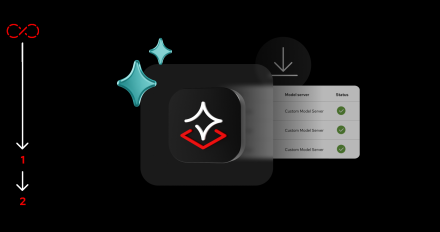Yashwanth Maheshwaram's contributions

Learning path
Download, serve, and interact with LLMs on RHEL AI
Yashwanth Maheshwaram
+1
Configure your Red Hat Enterprise Linux AI machine, download, serve, and

Blog
Announcing the General Availability of Red Hat Enterprise Linux AI (RHEL AI) Version 1.2!
Yashwanth Maheshwaram
Announcing the General Availability of Red Hat Enterprise Linux AI (RHEL AI)

Article
Creating an AI-powered service for detecting fraudulent card transactions
Yashwanth Maheshwaram
Train and deploy an AI model using OpenShift AI, then integrate it into an application running on OpenShift.
 Article
Article
Modernizing Pedal: Breaking down a Javå monolith into Quarkus microservices
Yashwanth Maheshwaram
+1
Understand how to breakdown a monolith into Quarkus based microservices
 Article
Article
Modernizing Pedal: API management for modern system design and administration
Yashwanth Maheshwaram
+1
Using API Management for applications during modernization
 Article
Article
Modernization - Rehost to OpenShift using ArgoCD - Pedal based guide
Yashwanth Maheshwaram
+1
Rehosting, a cornerstone in the evolution of software development and deployment, has traditionally enabled the concurrent operation of multiple operating systems and applications on the same physical hardware. This approach, often employed through virtual machines (VMs), enhances efficiency, scalability, and resource utilization.

Article
Modernization: A reference approach
Yashwanth Maheshwaram
Explores how Red Hat OpenShift technologies can aid the transition from monolith to microservices, simplifying the process and ensuring a robust and secure application.
 Article
Article
Modernization: Managing data during the process
Yashwanth Maheshwaram
+1
Data refactoring unlocks the potential for adaptable, resilient applications. Consider these techniques when migrating monolithic applications to microservices.

Download, serve, and interact with LLMs on RHEL AI
Configure your Red Hat Enterprise Linux AI machine, download, serve, and

Announcing the General Availability of Red Hat Enterprise Linux AI (RHEL AI) Version 1.2!
Announcing the General Availability of Red Hat Enterprise Linux AI (RHEL AI)

Creating an AI-powered service for detecting fraudulent card transactions
Train and deploy an AI model using OpenShift AI, then integrate it into an application running on OpenShift.

Modernizing Pedal: Breaking down a Javå monolith into Quarkus microservices
Understand how to breakdown a monolith into Quarkus based microservices

Modernizing Pedal: API management for modern system design and administration
Using API Management for applications during modernization

Modernization - Rehost to OpenShift using ArgoCD - Pedal based guide
Rehosting, a cornerstone in the evolution of software development and deployment, has traditionally enabled the concurrent operation of multiple operating systems and applications on the same physical hardware. This approach, often employed through virtual machines (VMs), enhances efficiency, scalability, and resource utilization.

Modernization: A reference approach
Explores how Red Hat OpenShift technologies can aid the transition from monolith to microservices, simplifying the process and ensuring a robust and secure application.

Modernization: Managing data during the process
Data refactoring unlocks the potential for adaptable, resilient applications. Consider these techniques when migrating monolithic applications to microservices.

